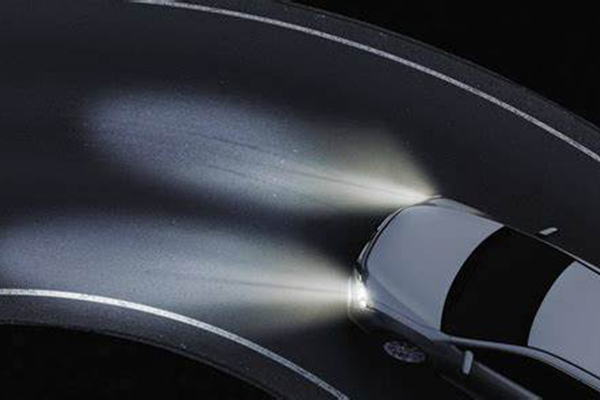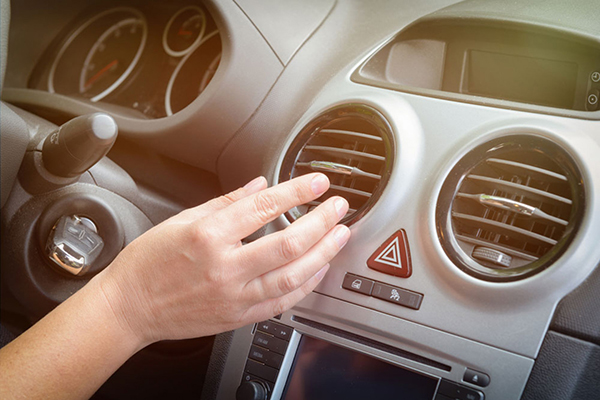Automobiles play a crucial role in modern society, representing progress, convenience, and improved living standards. However, with the increasing number of vehicles on the road, the demand for production, processing, painting, and maintenance has also grown.
These activities in manufacturing workshops, testing areas, and special processes often involve gases such as ammonia, combustible gases, carbon monoxide, and oxygen. Furthermore, volatile organic compounds (VOCs) and hydrogen gas, which are flammable and toxic, can be generated during various stages of automotive manufacturing, engine production, testing, and special processes. To ensure comprehensive safety in production, detecting and monitoring these harmful gases is necessary.
Volatile Organic Compounds (VOCs) Detection:
VOCs in the automotive manufacturing process primarily come from drying ovens and paint booths. In the paint booth, most of the VOCs are paint particles suspended in the air after atomization. The drying ovens have a more complex composition. For instance, in the 3C1B process using water-based coatings, there are three drying ovens: electrophoretic drying oven, sealant drying oven, and topcoat drying oven. These ovens are used to dry the vehicle body after each process.
During drying, various unidentified substances evaporate, collectively known as VOCs, which harm human health. PID sensors, such as the PID-AR5 from Baseline (compatible with the US Baseline PID-200), can be used to detect VOCs in the automotive manufacturing process. These sensors have high sensitivity to VOCs and are indispensable tools for early warning of hazardous substances and leak monitoring.
Fuel Leak Detection:
Current automobiles primarily use gasoline and diesel as fuel. However, alternative fuels like natural gas, liquefied petroleum gas, methanol, ethanol, biofuels, hydrogen, and dimethyl ether are being developed and utilized. Fuel leaks are prone to occur during engine performance testing, which can result in the formation of toxic gases.
For the detection of natural gas, liquefied petroleum gas, ethanol, and hydrogen, sensors such as the TGS2611, TGS2610, TGS2620, and TGS2616 can be used, respectively. These gas sensors provide reliable and dynamic responses to different volatile organic compounds.
Characteristics of Combustible Gas Sensor/Natural Gas Sensor TGS2611:
- Complies with new national standards
- Resistant to poisoning, high-concentration immersion, and shock
- Good stability
- Low power consumption
- High sensitivity to methane gas
- Long lifespan and low cost
- Simple application circuit
Applications of Combustible Gas Sensor/Natural Gas Sensor TGS2611:
- Home gas leak detectors
- Portable gas detectors
- Leakage detection in gas facilities
Carbon Monoxide (CO) Poisoning:
The main purpose of the drying ovens in the automotive paint line is to bake the painted car bodies at high temperatures, allowing the wet paint film adhering to the surface to crosslink and cure, forming a high-performance coating. The exhaust gases generated by the heating systems of these ovens often contain carbon monoxide, which can lead to leakage hazards.
Additionally, vehicle exhaust emissions and engine testing can cause carbon monoxide poisoning incidents among nearby personnel. Electrochemical CO sensors like the CO-BF sensor can be used to detect CO gas. These sensors offer high sensitivity, selectivity, and low concentration linearity and are commonly used in petroleum, environmental protection, coal mines, and automotive industries.
Main Features of Carbon Monoxide (CO) Sensor/CO Sensor – CO-BF:
- Measurement range: 5000ppm
- Sensitivity: 80-130nA/ppm
- Response time: <25s
- Linear range: +/-30ppm
- Overload: 10000ppm
- Resolution: 0.5ppm
- Size: Φ32.3*16.5mm, with a filter
- Lifespan: 2 years
- Storage period: 6 months
- Operating temperature: -30 to 50°C
- Operating humidity: 15-90% RH
- Load resistance: 10-47Ω
Oxygen Depletion in Confined Spaces:
A relatively confined space is created in engine testing areas, paint booths, drying ovens, and storage tanks for natural gas or gasoline products. When other gases displace the oxygen in these spaces, it can pose a risk of asphyxiation for workers.
Oxygen sensors with long lifetimes, such as the KE series (KE-25F3/KE-25/KE-50), are suitable for detecting oxygen levels in limited spaces. These electrochemical sensors exhibit excellent chemical stability, are less affected by CO2 interference, and have a prolonged lifespan. They are widely used in medical, biological, food, safety, and oxygen detection applications.
Characteristics of Long-Life Electrochemical Oxygen Sensors KE Series (KE-25F3/KE-25/KE-50):
- Long lifespan
- Not affected by CO2, CO, H2S, NOx, H2
- Low cost
- Operates at room temperature
- Stable signal output
- No external power supply required
- No heating required
Applications:
- Medical: Anesthesia machines, respirators
- Biological: Oxygen egg incubators
- Food industry: Cold storage rooms, greenhouses
- Safety industry: Air conditioning systems
- Oxygen detectors
Technical specifications:
- Measurement range: 0-100% O2
- Accuracy:
- KE-25: ±1% (full range)
- KE-50: ±2% (full range)
- Operating temperature: 5-40°C
- Storage temperature: -20 to +60°C
- Response time:
- KE-25: 14±2 seconds
- KE-50: 60±5 seconds
- Output in the air:
- KE-25: 10.0-15.5 mV
- KE-50: 47.0-65.0 mV
- Expected lifespan:
- KE-25: 5 years
- KE-50: 10 years
Conclusion:
Harmful gas detection is vital in the automotive manufacturing process to ensure the safety and well-being of personnel. Using gas sensors, such as PID sensors for VOC detection, combustible gas sensors for fuel leak detection, electrochemical CO sensors for carbon monoxide detection, and oxygen sensors for confined space monitoring, can significantly mitigate risks associated with these harmful gases.
Continuous advancements in gas sensor technology contribute to creating a safer working environment in the automotive industry. Manufacturers can prioritize worker safety and promote sustainable and responsible manufacturing practices by effectively detecting and monitoring harmful gases.





